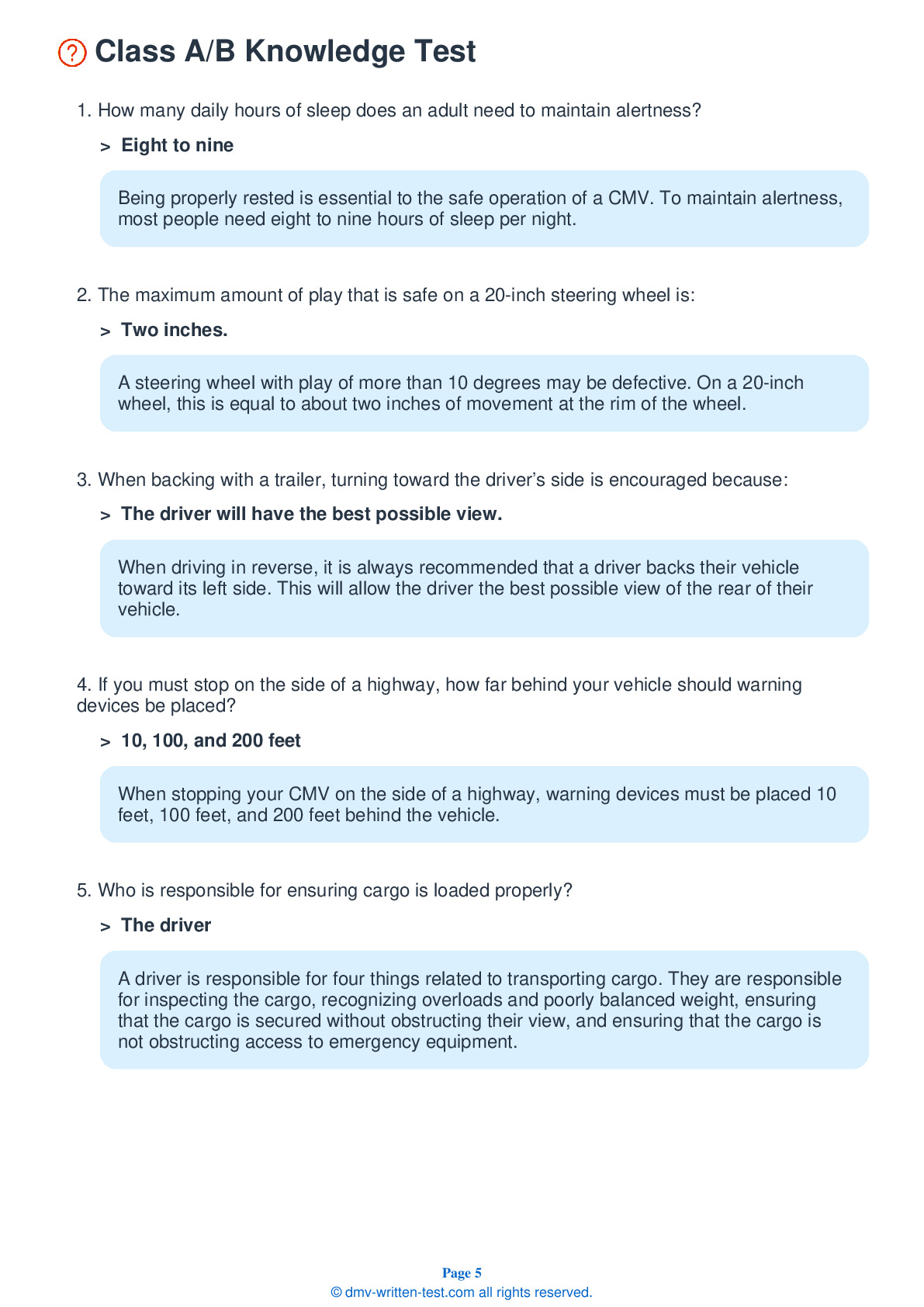Combination
All applicants who are applying for a Class A CDL should be prepared to take the Combination test. This test covers information found in Section 6 of the Commercial Driver License Manual. Section 6 provides the information needed to safely operate tractor-trailers, doubles, triples, and straight trucks with trailers. The test is made up of 20 multiple-choice questions, and applicants will need to correctly answer a minimum of 16 questions to pass. The Combination test is not a replacement for the Double/Triple endorsement test.
Number of Question
Passing Score
8. Failure to keep the fifth wheel plate properly greased could:
Explanation
Failure to keep the fifth wheel plate properly lubricated can create friction between the tractor and trailer, causing steering problems.
9. Combination vehicles:
Explanation
Combination vehicles are usually heavier and longer than single commercial vehicles. For these reasons, they usually require more driving skill than single commercial vehicles.
10. If you are backing and the trailer begins to drift off-course, the driver should:
Explanation
If your trailer begins to drift while you are backing, you should correct the drift immediately by turning the top of the steering wheel in the direction of the drift.
11. To prevent a rollover, a driver should:
Explanation
Rollovers can happen when a combination vehicle is turned too quickly. To help prevent the risk of rollover, it is important to keep the vehicle's center of gravity low by loading cargo as close to the ground as possible.
12. Keeping cargo low can:
Explanation
Rollovers can happen when a combination vehicle is turned too quickly. To help prevent the risk of rollover, it is important to keep the vehicle's center of gravity low by loading cargo as close to the ground as possible.
13. Trailers built before 1975 are:
Explanation
Trailers built before 1975 are not required to have spring brakes. When parking a trailer without spring brakes, be sure to use wheel chocks to prevent the trailer from rolling.
14. If you are backing and become unsure about your path of travel, you should:
Explanation




